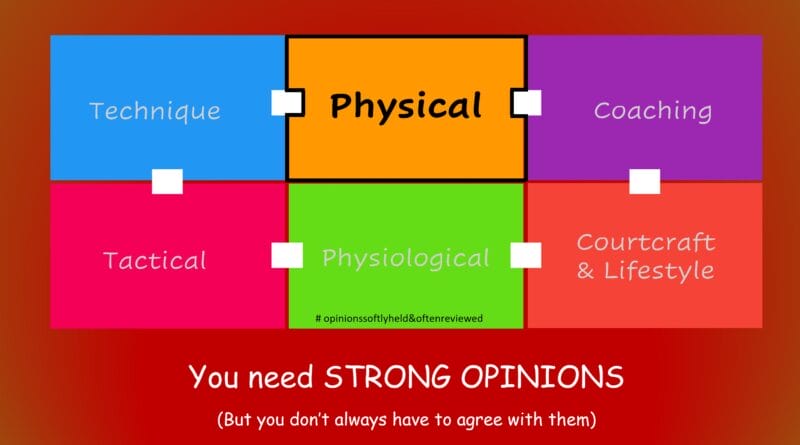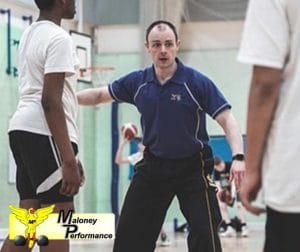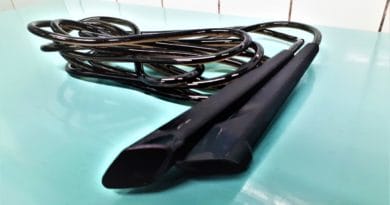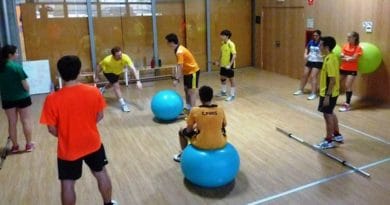Badminton S&C thoughts and opinions
What opinions do you have about Strength & Conditioning for badminton?
I’ve asked a qualified S&C Coach for their views so that you can learn from them
Here are their thoughts, those that are essential for a players development, motivation & enjoyment
Compare your thoughts to theirs
I wonder if you will agree with all they say and suggest
– – – – – – – – – – – – – – – – – –
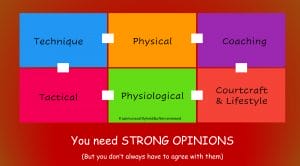
This is part of a mini-series that asks you to identify your badminton absolutes’, those strong opinions that you feel are essential for development and good practice.
There are several different categories so that we can cover lots of ideas. Hopefully, some of the content will challenge you or help you define and refine your badminton coaching absolutes.
I will ask as many ‘experts’ as I can so that you get a range of opinions.
If you want to contribute with your thoughts that would be great. Why don’t you email me your opinions, contact@badmintonandy.com
My aim is to stimulate thoughts, support beliefs, challenge misguided opinions held too strongly
– – – – – – – – – – – – – – – – – –
Understanding the role of S&C
 This is a guest post by Dr Sean Maloney PhD, ASCC, CSCS, CES
This is a guest post by Dr Sean Maloney PhD, ASCC, CSCS, CES
Sean has worked with athletes from wide range of levels and backgrounds; from Olympic, World and Commonwealth medallists to youngsters still in pre-school. Sean has the training knowledge and personal skills to deliver results no matter what the client’s background.
Sean holds a PhD in Biomechanics alongside a MSc in Strength & Conditioning. He is currently a guest S&C lecturer for Middlesex University, the University of Bedfordshire and the Professional Golfers’ Association. Sean has worked with expert badminton players from World-class to Junior National level.
If you want to get in touch with Sean or ask him a question, email sean@maloneyperformance.com or connect with him on Instagram: @badminton.fit
“It’s easy to think that S&C is simply about getting athletes lifting weights in the gym or running on a treadmill, that it’s just about improving raw physical capacities such as strength, speed or aerobic fitness. Yes, these activities will happen but it’s more important to understand why these activities are selected”

“Focus on why methods are being implemented or why physical qualities are being targeted.
The “why” dictates the “how”
– – – – – – – – – – – – – – – – – –
The goals and aims of S&C
1. Reduce the risk of illness and injury
2. Remove roadblocks to performance
3. Maximise ways to win
4. Coach and S&C working together
The higher the level of the player,
the more the badminton coach and the S&C coach need to work together
– – – – – – – – – – – – – – – –
Reduce illness and injury risk
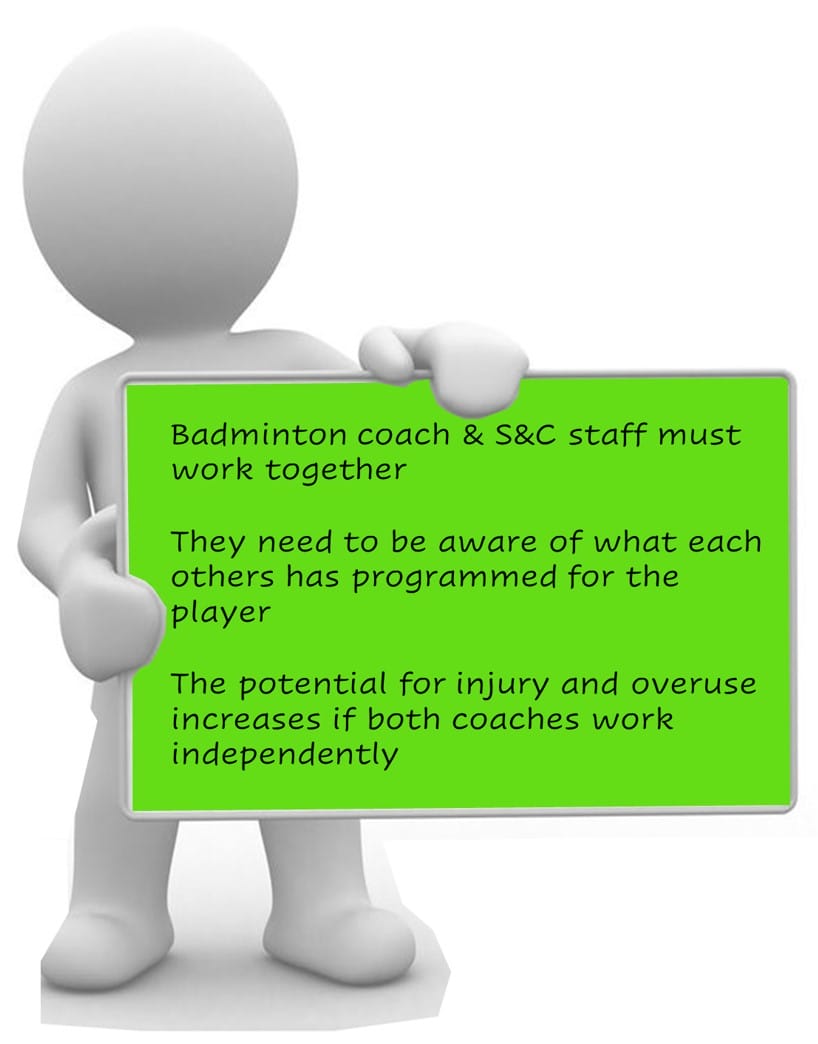 It’s the role of the badminton coach and the S&C coach to work together and importantly be aware of what the other has programmed for the player. The potential for injury and overuse increases if both coaches work independently of each other.
It’s the role of the badminton coach and the S&C coach to work together and importantly be aware of what the other has programmed for the player. The potential for injury and overuse increases if both coaches work independently of each other.
- Players can only improve if they train and compete on the court with high quality and high consistency. The key to progress is consistency in training: both programme and performance.
- Four areas tend to be prone to injury in badminton: the knee, low back, shoulder and ankle. These areas may warrant some specific robustness training.
Understanding potential risk factors help to mitigate the risk of injury:
- Changes in training load are near the top of the list. Even small changes in load can have surprising effects (e.g. change of surface, speed of hall, etc.)
- Changes in the player’s body mass or height are important. Especially dealing with young, developing players.
- Poor whole-body strength (e.g. measured in squat/deadlift) and isolated strength (e.g. calf strength) are consistently related to injury risk.
- Similarly, poor mobility (typically ankle and hip) is typically related to elevated injury risk.
– – – – – – – – – – – – – – – –
Remove roadblocks
 Working with the badminton coach, the S&C coach should look to identify the physical factors which may be limiting performance.
Working with the badminton coach, the S&C coach should look to identify the physical factors which may be limiting performance.
- For players with a low S&C training age, there’s little need to be sport specific from a performance perspective. General training focused on key fundamental movement patterns will carry great benefits if well coached and well executed.
- As a general sequence: develop movements, develop stability/control, develop strength, develop speed, develop reactivity.
- As both the level of the player and their S&C training age increase, training should become more specific to the sport and to the individual. Understand the demands of your sport.
- Identify problems on-court and then ‘reverse engineer’ a development plan based to solve them.
– – – – – – – – – – – – – – – –
Maximise ways to win
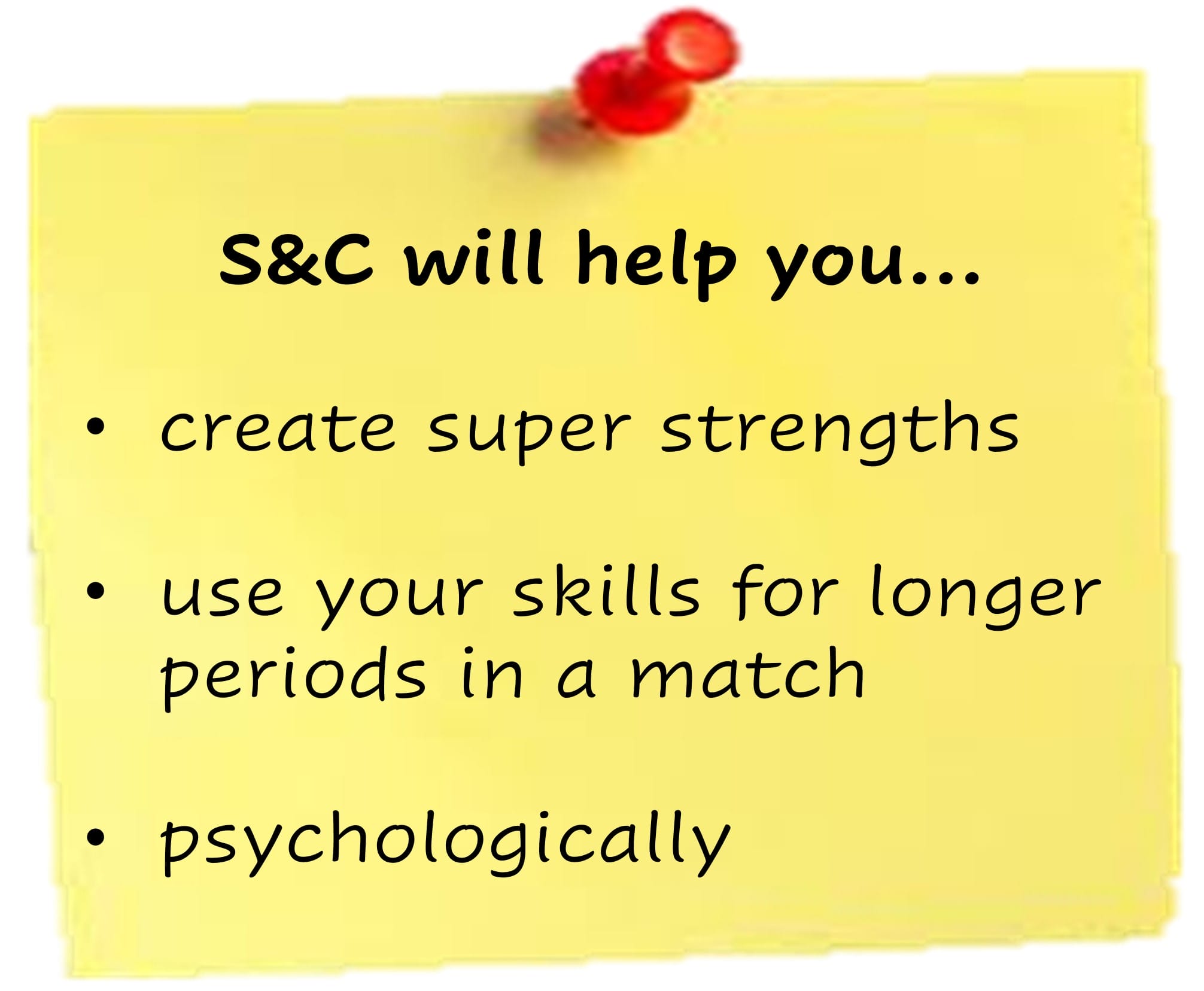 An important goal of the S&C programme should be to “increase their arsenal” of weaponry. Ensure the players have the physical capacities to take advantage of the court situations. For example:
An important goal of the S&C programme should be to “increase their arsenal” of weaponry. Ensure the players have the physical capacities to take advantage of the court situations. For example:
- Increasing overhead power is likely to make your smashes more effective
- Improving push-off power is likely to make you quicker to net to attempt to kill
- Improving endurance is likely to make it easier for you to win attritional rallies
- If the player has more developed physical capacities, they are likely to perceive more “affordances” in the games. This makes them more adaptable and resilient to different game scenarios (i.e. slow hall, very attacking opponent, etc.)
- The S&C programme shouldn’t just focus on the weak point, turn the player’s strengths into superstrengths. Strengths win matches.
– – – – – – – – – – – – – – – –
Coach and S&C working together
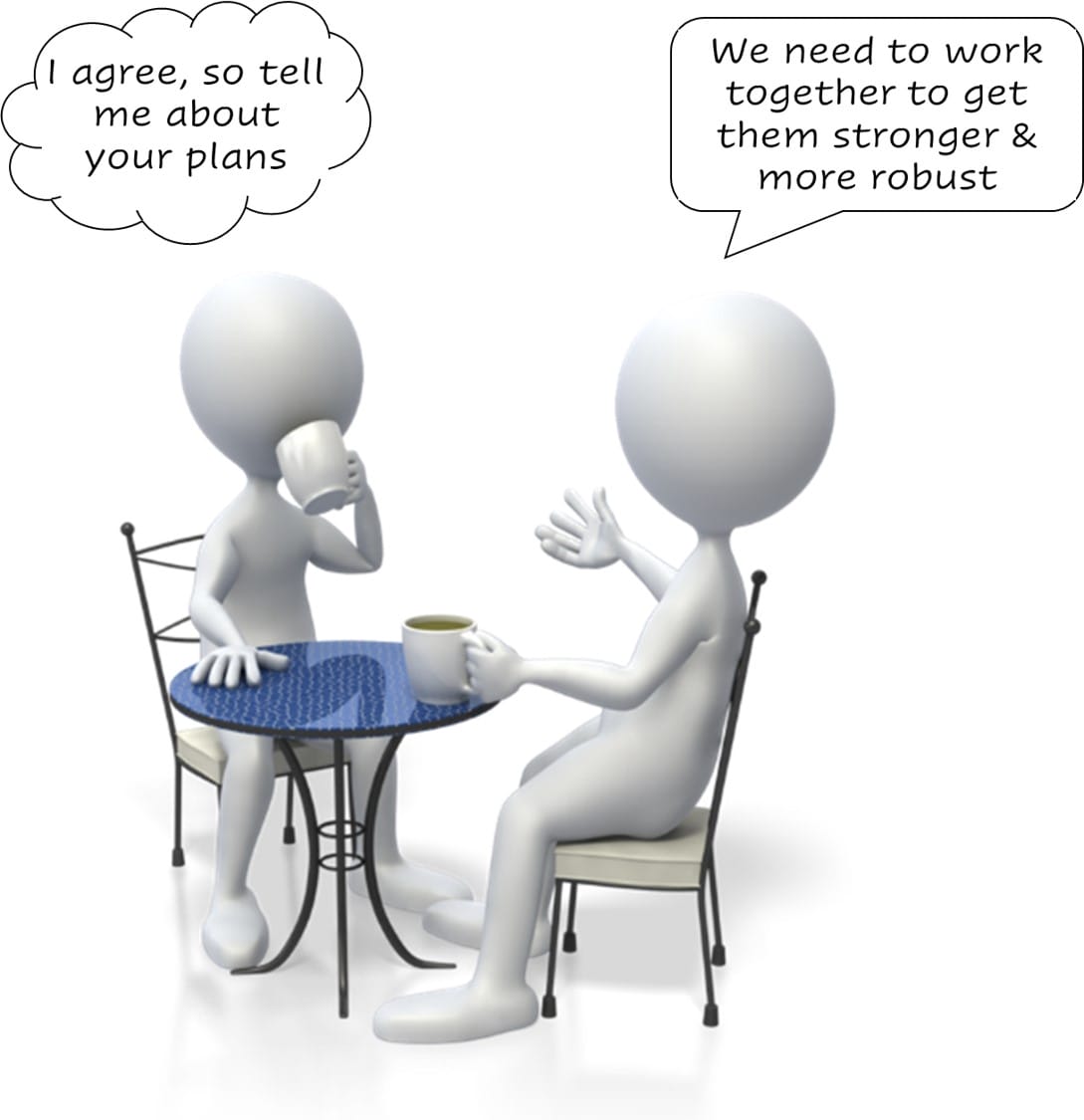 It’s best practice for the S&C coach and badminton coach to be working collaboratively with players. Why wouldn’t you do this as it’s in the best interest of all parties (not just the player)
It’s best practice for the S&C coach and badminton coach to be working collaboratively with players. Why wouldn’t you do this as it’s in the best interest of all parties (not just the player)
- Find ways of identifying each person’s areas of knowledge and expertise. Create open and honest discussions with both coaches ensuring that they understand the aims of the other.
- Both coaches should seek to assess the player’s strengths and weaknesses. In terms of the development plan, ask questions such as “Where do things break down on court?” and “How are they getting beaten or placed under pressure during a match?”.
- Once an issue has been identified, seek to establish if the problem occurring because of a lack of physical capacity or a technical/tactical/skill-based issue.
- Ensure that training is complimentary, not disjointed. Communication is vital to reduce player confusion, possible injury, and coach conflicts. Programme content for both coaches must be shared, understood and, if needed, amended.

